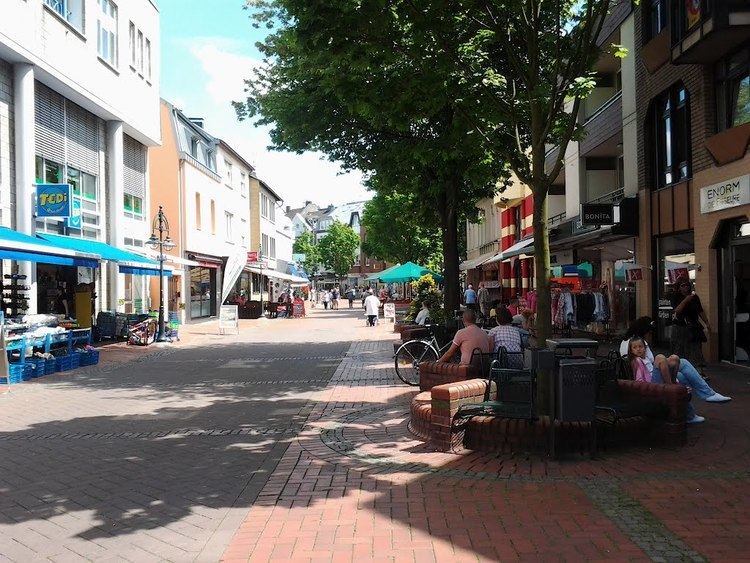Admin. region Köln Elevation 55 m (180 ft) Area 62.17 km² Population 75,369 (31 Dec 2010) | Time zone CET/CEST (UTC+1/+2) Local time Saturday 9:43 AM | |
 | ||
Weather 10°C, Wind E at 10 km/h, 58% Humidity Points of interest Wahner Heide, Bilderbuchmuseum, Fischereimuseum der Bergheim, Troisdorf‑Sieglar, FEHMARNSUND Brücke | ||
Troisdorf ( [ˈtroːsdɔrf]; Colognian: Trooßdoorf) is a town in the Rhein-Sieg-Kreis (district), in North Rhine-Westphalia, Germany.
Contents
- Map of Troisdorf Germany
- Geography
- Division of the town
- History
- Mayors
- Notable places
- Twin cities
- Notable persons
- References
Map of Troisdorf, Germany
Geography
Troisdorf is located approximately 22 kilometers south of Cologne and 13 kilometers north east of Bonn.
Division of the town
Troisdorf consists of 12 districts (population as of April, 2014):
History
Troisdorf became a free city in 1952. In 1969, the urban area expanded with the annexation of the township of Sieglar and the villages of Altenrath and Friedrich-Wilhelms-Hütte (total population in 1969: about 51,000). The first large settlements in this area go back to the 9th and 10th century (Eschmar and Sieglar 832, Bergheim 987). The first churches in this area were built around 700 AD in Bergheim (St. Lambertus).
Troisdorf is home to about 9600 foreign nationals. The two most numerous foreign national groups are Turks (3100) and Greeks (1600). On June 4, 1972, Troisdorf founded the first advisory council for foreign citizens in Germany. In the years following the Peaceful Revolution and German reunification of 1989/1990 many migrants from Russia and other East European countries settled in Troisdorf.
On April, 2014, Troisdorf had a population of 76,435 according to official records. 11% of the population are foreign migrants.
Troisdorf has a predominantly Christian population: Roman Catholics, Protestants, Baptists, Jehovah's Witnesses and other Christian denominations, along with Muslim, Orthodox Christian and Jewish populations of non-indigenous origin. Troisdorf is one of the German cities where its mosque includes a minaret, built for the local Islamic community.
Mayors
volunteers:
professionals:
Notable places
Europe's only picture-book museum is located in Troisdorf at the Burg Wissem castle.
